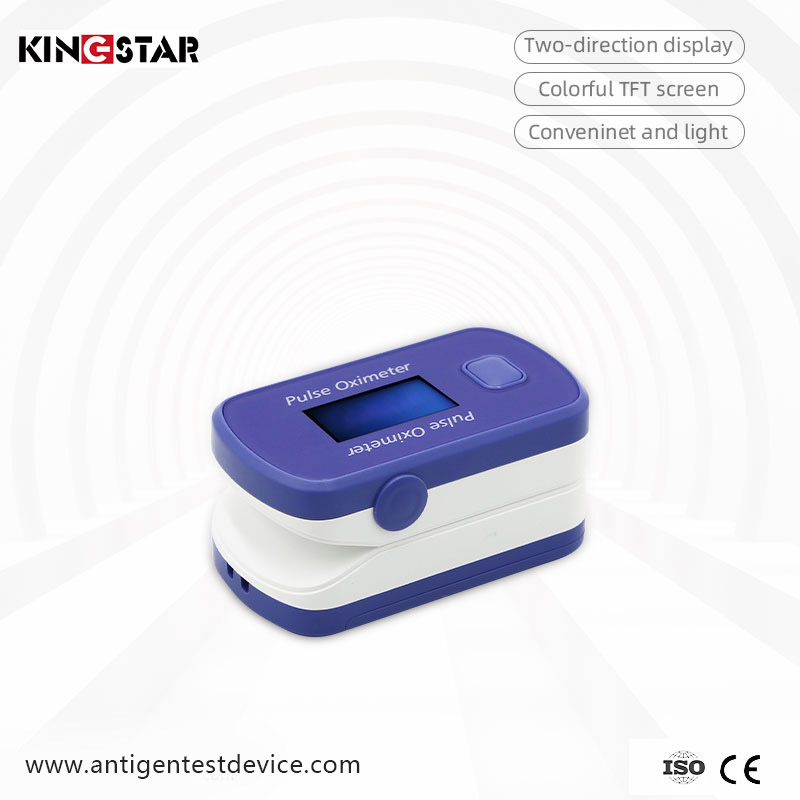What are the benefits of using a fingertip oximeter over other types of oximeters?
2024-09-23

What are the benefits of using a fingertip oximeter?
1. Convenience: A fingertip oximeter is small, portable, and easy to use. You can take it with you wherever you go, making it convenient for people who need to monitor their oxygen levels regularly. 2. Accuracy: A fingertip oximeter provides accurate and reliable readings quickly. It can detect changes in your oxygen levels almost instantly, which is especially important for people with respiratory problems. 3. Non-invasive: Unlike other types of oximeters, which may require a probe to be inserted into your body, a fingertip oximeter is non-invasive. This makes it painless and reduces the risk of infection. 4. Cost-effective: Fingertip oximeters are relatively inexpensive, making them accessible to people who need to monitor their oxygen levels regularly. 5. Easy to read: A fingertip oximeter has a digital display that shows your oxygen saturation level and pulse rate. The display is easy to read, even for people who are not familiar with medical equipment.How does a fingertip oximeter work?
A fingertip oximeter works by shining a light through your finger and measuring the amount of light that passes through. Oxygenated blood absorbs more light than deoxygenated blood, so the device can calculate your oxygen saturation level based on the amount of light that passes through your finger.Who can benefit from using a fingertip oximeter?
People who have respiratory problems such as asthma, chronic obstructive pulmonary disease (COPD), and sleep apnea can benefit from using a fingertip oximeter to monitor their oxygen levels. Athletes who engage in high-altitude activities such as mountain climbing and skiing can also use a fingertip oximeter to monitor their oxygen levels and prevent altitude sickness.In summary, a fingertip oximeter is a convenient, accurate, and non-invasive way to monitor your oxygen levels. It is easy to use, cost-effective, and has a digital display that is easy to read. It is a useful tool for people with respiratory problems and for athletes who engage in high-altitude activities.
KINGSTAR INC is a leading provider of medical devices, including oximeters and antigen test devices. Our products are high-quality, accurate, and reliable, and we are committed to providing our customers with excellent service and support. Contact us at info@nbkingstar.com to learn more about our products and services.Research papers on fingertip oximeters:
1. Kwon, O. J., Jeong, J. H., Ryu, S. R., Lee, M. H., & Kim, H. J. (2015). Evaluation of the accuracy and reliability of a fingertip pulse oximeter in patients with chronic obstructive pulmonary disease. International journal of chronic obstructive pulmonary disease, 10, 1353-1358.
2. Soubani, A. O., & Uzbeck, M. H. (2018). Finger pulse oximetry: principles and limitations. Chest, 154(4), 838-844.
3. Chen, Y. L., Yao, W. J., Tang, Y. J., & Wu, X. Y. (2016). The diagnostic accuracy of a new fingertip pulse oximeter in measuring oxygen saturation in patients with chronic obstructive pulmonary disease. Journal of clinical nursing, 25(5-6), 640-647.
4. Cook, T. M., & Whinnet, A. T. (2014). Titrating oxygen delivery using pulse oximetry: Is it really helpful?. Anesthesia & Analgesia, 119(4), 695-696.
5. Yeo, C. L., Ho, K. K., & Jan, Y. K. (2020). The validity and reliability of wireless fingertip pulse oximeter in individuals with and without tattoos. Sensors, 20(20), 5740.
6. Tomlinson, D. R., Shewry, P. R., & Bowker, K. (2017). Comparison of a portable fingertip pulse oximeter with a tabletop device in healthy young adults. Journal of clinical monitoring and computing, 31(3), 443-448.
7. Talhab, L. J., Mouawad, N. J., & Chami, H. A. (2015). Fingertip pulse oximetry in the assessment of acute mountain sickness. Oxygen transport to tissue XXXVI, Springer, Cham, 39-43.
8. Li, G., Zhao, Q., Zheng, L., Chen, L., & Yuan, Y. (2019). A study on the accuracy and the affecting factors of pulse oximeters. Journal of Healthcare Engineering, 2019.
9. Menlove, T., Starks, M., & Telfer, S. (2017). The use of pulse oximetry in monitoring sickle cell patients during air travel. British journal of nursing, 26(18), 1024-1030.
10. Kato, J., & Ogawa, R. (2016). Accuracy of a new fingertip pulse oximeter with a pediatric probe in hypoxemic children. Journal of clinical monitoring and computing, 30(1), 117-122.



